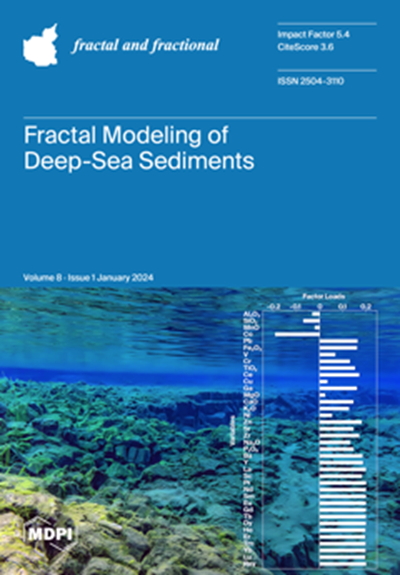晶粒定向磁性钢层压中磁损耗的高频分数预测和空间分布
IF 3.6
2区 数学
Q1 MATHEMATICS, INTERDISCIPLINARY APPLICATIONS
引用次数: 0
摘要
晶粒取向硅钢片(GO FeSi)是电磁设备中实现高效能量转换的重要元件。虽然传统上针对 50/60 Hz 的电源频率进行了优化,但追求更高的工作频率(f ≥ 200 Hz)有望提高功率密度。本文介绍了一个模型,用于估算 GO FeSi 薄片在这些较高工作频率下的磁性行为。所提出的模型结合了麦克斯韦扩散方程和分数微分方程衍生的材料定律,捕捉到了磁化过程的粘弹性特征。值得注意的是,该模型的动态贡献只有两个参数,在 50 Hz 至 1 kHz 的频谱范围内实现了 4.8% 的欧氏相对距离误差。论文的第一部分对模型进行了详尽的描述,并对模拟数据和测量数据进行了全面的比较。随后,论文介绍了将磁损耗局部划分为三个传统类别的方法:磁滞、经典和过剩,并对各种测试频率进行了划分。研究进一步利用模型的预测能力,扩展到研究极高频率机制,阐明损耗贡献的空间分布。比例迭代学习控制的应用促进了模型对标准特征条件的适应,采用了正弦外加磁通密度。论文探讨了 GO FeSi 在极端运行条件下的行为影响,为理解和优化高频应用中的磁芯性能提供了重要的见解和思考。本文章由计算机程序翻译,如有差异,请以英文原文为准。
High-Frequency Fractional Predictions and Spatial Distribution of the Magnetic Loss in a Grain-Oriented Magnetic Steel Lamination
Grain-oriented silicon steel (GO FeSi) laminations are vital components for efficient energy conversion in electromagnetic devices. While traditionally optimized for power frequencies of 50/60 Hz, the pursuit of higher frequency operation (f ≥ 200 Hz) promises enhanced power density. This paper introduces a model for estimating GO FeSi laminations’ magnetic behavior under these elevated operational frequencies. The proposed model combines the Maxwell diffusion equation and a material law derived from a fractional differential equation, capturing the viscoelastic characteristics of the magnetization process. Remarkably, the model’s dynamical contribution, characterized by only two parameters, achieves a notable 4.8% Euclidean relative distance error across the frequency spectrum from 50 Hz to 1 kHz. The paper’s initial section offers an exhaustive description of the model, featuring comprehensive comparisons between simulated and measured data. Subsequently, a methodology is presented for the localized segregation of magnetic losses into three conventional categories: hysteresis, classical, and excess, delineated across various tested frequencies. Further leveraging the model’s predictive capabilities, the study extends to investigating the very high-frequency regime, elucidating the spatial distribution of loss contributions. The application of proportional–iterative learning control facilitates the model’s adaptation to standard characterization conditions, employing sinusoidal imposed flux density. The paper deliberates on the implications of GO FeSi behavior under extreme operational conditions, offering insights and reflections essential for understanding and optimizing magnetic core performance in high-frequency applications.
求助全文
通过发布文献求助,成功后即可免费获取论文全文。
去求助
来源期刊

Fractal and Fractional
MATHEMATICS, INTERDISCIPLINARY APPLICATIONS-
CiteScore
4.60
自引率
18.50%
发文量
632
审稿时长
11 weeks
期刊介绍:
Fractal and Fractional is an international, scientific, peer-reviewed, open access journal that focuses on the study of fractals and fractional calculus, as well as their applications across various fields of science and engineering. It is published monthly online by MDPI and offers a cutting-edge platform for research papers, reviews, and short notes in this specialized area. The journal, identified by ISSN 2504-3110, encourages scientists to submit their experimental and theoretical findings in great detail, with no limits on the length of manuscripts to ensure reproducibility. A key objective is to facilitate the publication of detailed research, including experimental procedures and calculations. "Fractal and Fractional" also stands out for its unique offerings: it warmly welcomes manuscripts related to research proposals and innovative ideas, and allows for the deposition of electronic files containing detailed calculations and experimental protocols as supplementary material.
 求助内容:
求助内容: 应助结果提醒方式:
应助结果提醒方式:


